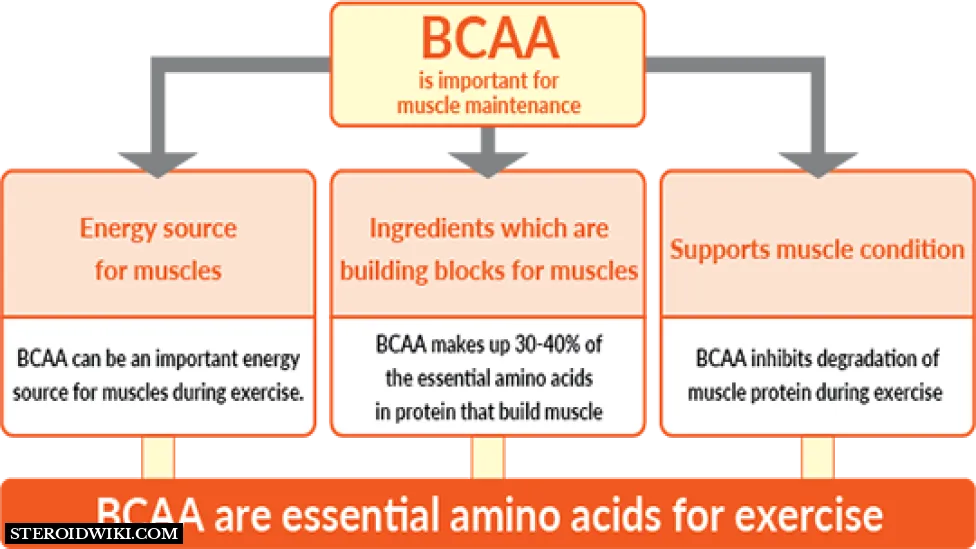What are BCAAs?
Taking BCAAs as a dietary supplement is very effective for building lean muscle. It is supplemented with whey protein and creatine.
But... What are BCAAs? What are their characteristics? What are their benefits? What are the risks after regular consumption of BCAAs? How dangerous are Branch Chain Amino Acids? Here are the answers to all these questions.
What are BCAAs?
In English Branched Chain Amino Acids, BCAAs are branched amino acids (leucine, isoleucine, valine). The combination of these three amino acids makes up about a third of muscle protein.
BCAAs are part of the family of essential amino acids. They are said to be essential because the body cannot manufacture them on its own. It is therefore essential to provide them through food and nutrition to stay in good health and also to allow muscle development. Without BCAAs (supplemented or natural), muscle anabolism is not possible.
What are their characteristics?
Unlike other amino acids that are metabolized in the liver, BCAAs are metabolized directly in muscle (they are oxidized in muscle mitochondria).
When muscles have used up their glycogen (sugar) store, they begin to use fat and protein for energy. Large proteins are thus destroyed in several small pieces in order to recover the BCAAs, which will be used as fuel.
This decreases the overall muscle density of the body.
What are the effects and benefits?
Taken before, during and after strength training, BCAAs can increase muscle mass and limit the decomposition of proteins (anti-catabolic role). It is therefore a dietary supplement of choice for mass gain and maintenance.
Once assimilated, BCAAs are used directly by muscle cells as a source of energy. This prevents the body from drawing from its own protein stores for energy.
It is known that intense strength training is accompanied by transient immunosuppression. Taking BCAAs before a weight training session limits the transient drop in glutamine and therefore indirectly strengthens immune function.
Another significant effect in bodybuilding: it increases energy production during intense strength training sessions.
What do the numbers on the packaging represent?
There is very often a small line on the BCAA jars with 3 numbers which are most often 2.1.1. These figures correspond to the ratio of amino acids L-leucine L-isoleucine and L-valine. In our example, there will therefore be twice as much leucine for isoleucine and valine. In other words, if you buy 1000 g of BCAA 2.1.1, then you will have 500 g of leucine, 250 g of isoleucine and 250 g of valine.
What Is the Best Ratio?
To answer this question, you should know that leucine is the king of amino acids. It is the one which allows muscle cells to start the process of making muscle proteins.
This manufacturing allows proteins to accumulate in the muscles which in turn leads to muscle hypertrophy. Research suggests that people who add leucine and extra carbohydrates to their post-workout shakes have significantly higher muscle protein manufacturing, than those who consume basic protein and carbohydrates.
How Much BCAAs To Take?
The recommended dose is 10 to 15 g per day.
When To Take These BCAAs?
Before and during training. To optimize the aborption of BCAAs, you can take them with simple sugars (sweet drink) to increase assimilation.
Frequently Asked Questions
BCAAs and Muscle Hypertrophy
BCAAs especially leucine can directly stimulate protein synthesis. One study showed that BCAAs inhibit the breakdown of muscle proteins, independent of insulin.
Branched chain amino acids can also stimulate the secretion of certain hormones, for example growth hormone.
What are the benefits of these amino acids when it comes to preserving or increasing muscle mass?
The effects of BCAA supplementation on muscle protein synthesis and breakdown have been well studied. A study from Yale University School of Medicine in the United States found that taking BCAAs overnight decreased muscle breakdown, which scientists call proteolysis.
A research group from the University of Rome administered 14 grams of BCAAs per day for 30 days to healthy, untrained subjects. The composition was 25% valine, 25% isoleucine and 50% leucine. Test subjects were examined before and after supplementation for oxygen consumption, body weight, body mass index, lean mass ratio and strength. Following this experiment, the researchers observed an increase in lean body mass and strength in all participants.
In another study from Sweden, researchers administered around 10 grams of BCAAs during training to subjects who participated in either a marathon or a 30 km race. Scientists found a marked degradation of skeletal muscle in the placebo group. In the other group, the administration of BCAAs during this endurance test made it possible to limit the degradation of the muscle.
Does BCAA reduce Fat?
As a study by French scientists has shown, BCAAs can increase fat loss during calorie restriction. In one experiment, a group of 25 wrestlers were asked to reduce their calorie intake (28 calories per pound of body weight per day, approximately 2,545 calories for a 90 pound individual) for 19 days. The test subjects were then compared to four groups:
- a control group who had normal calorie intake with a low calorie group;
- a low calorie and high protein group;
- a low calorie and low protein group and
- a low calorie and BCAA supplemented group.
Body weight decreased in all low calorie groups with the greatest loss recorded (-5.4%) in the branched chain amino acid supplement group. The fat level determined by measuring the skin fold decreased in all low-calorie groups with, once again, the greatest decrease in the BCAA supplemented group. Fat levels calculated with MRI showed that the branched chain amino acids group lost the greatest percentage of fat (-23.4%) when compared to other low-calorie groups.
Interestingly, this difference was greater with regard to fat loss at the visceral level (around internal organs). Muscle mass decreased slightly in all low-calorie groups (around 4-5%), and diet did not significantly affect anaerobic capacity or muscle strength. However, despite the fact that these diets contained the same number of calories, their effects on adipose tissue or weight loss were different, as shown by the greater fat (and body weight) loss recorded with the group of branched amino acids.
BCAAs effect On Muscle Glycogen Levels
Researchers at Bromma University in Sweden studied the effects of sustained cycling exercise on blood amino acid levels as well as glycogen concentration. Subjects cycled at 70% of their maximal oxygen uptake for 60 minutes then cycled to their maximum ability and after every 15 minutes of exercise each subject took a BCAA solution (90 mg per kilogram of body weight) or a flavored placebo.
The ingestion of BCAAs not only produced an increase in the blood and muscle levels of these three amino acids, but also caused a significant increase in the level of alanine in the blood and muscle. The glycogen concentration decreased much less in the BCAA group (around 10%) compared to the placebo group (around 35%), and BCAA supplementation increased the production of alanine in the blood and muscle. Because less muscle glycogen was used in the BCAA group, alanine was able to be converted into glucose in the liver, the latter then being transported to the stressed muscle for use there as an energy source.
Does BCAAs makes Workouts Easier?
As curious as it sounds, it may be true. A group of Swedish researchers tested the idea that BCAA supplementation could have an impact on exercise as to how its difficulty was perceived. Test subjects cycled for an hour at 70% of their maximum aerobic capacity and took either BCAAs or a placebo. Every 10 minutes during exercise, each subject assessed their level of physical and mental fatigue.
Researchers found that on average, subjects who took BCAAs showed a 7% decrease in perceived physical fatigue and a 15% decrease in mental fatigue.



















